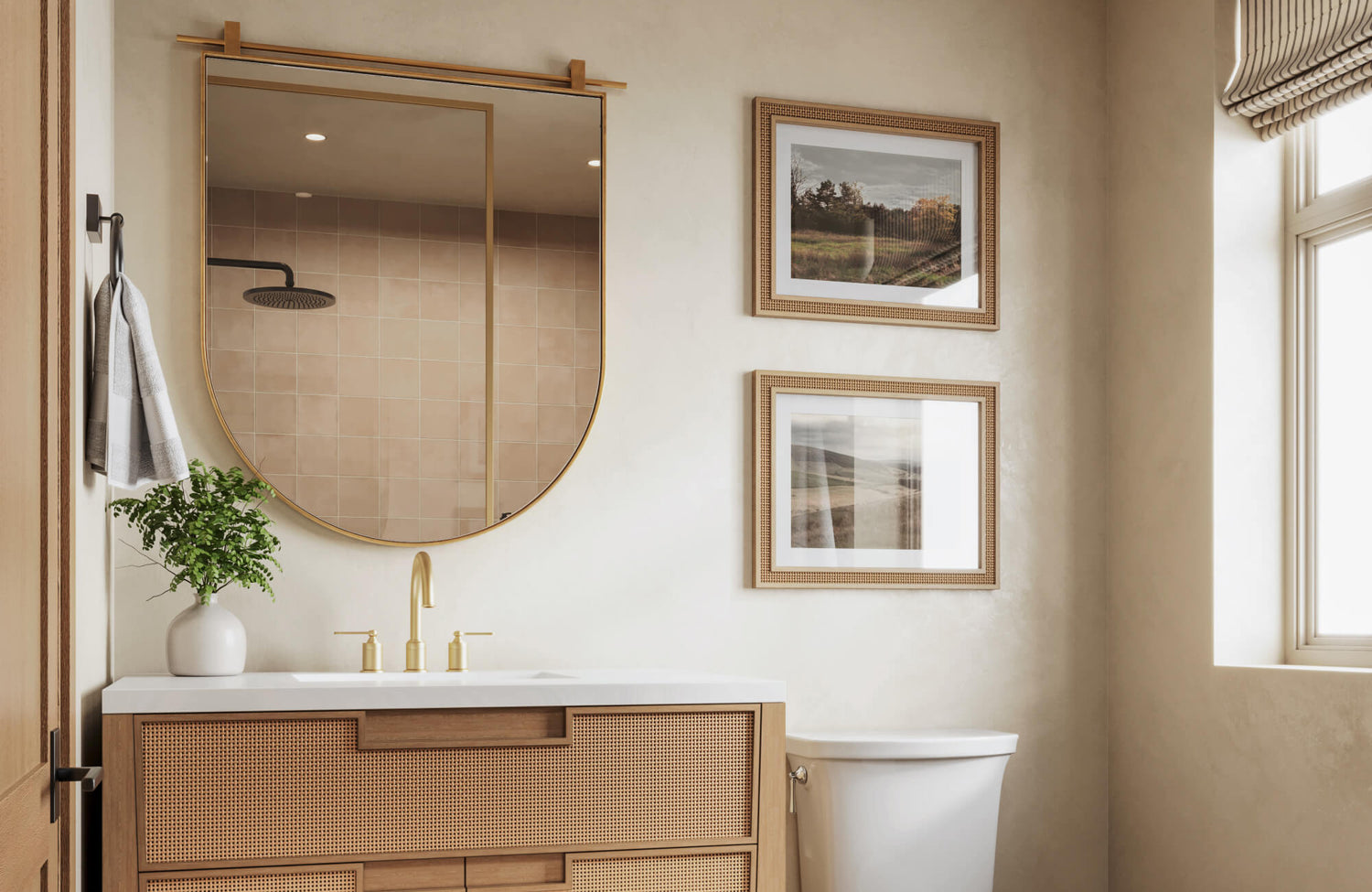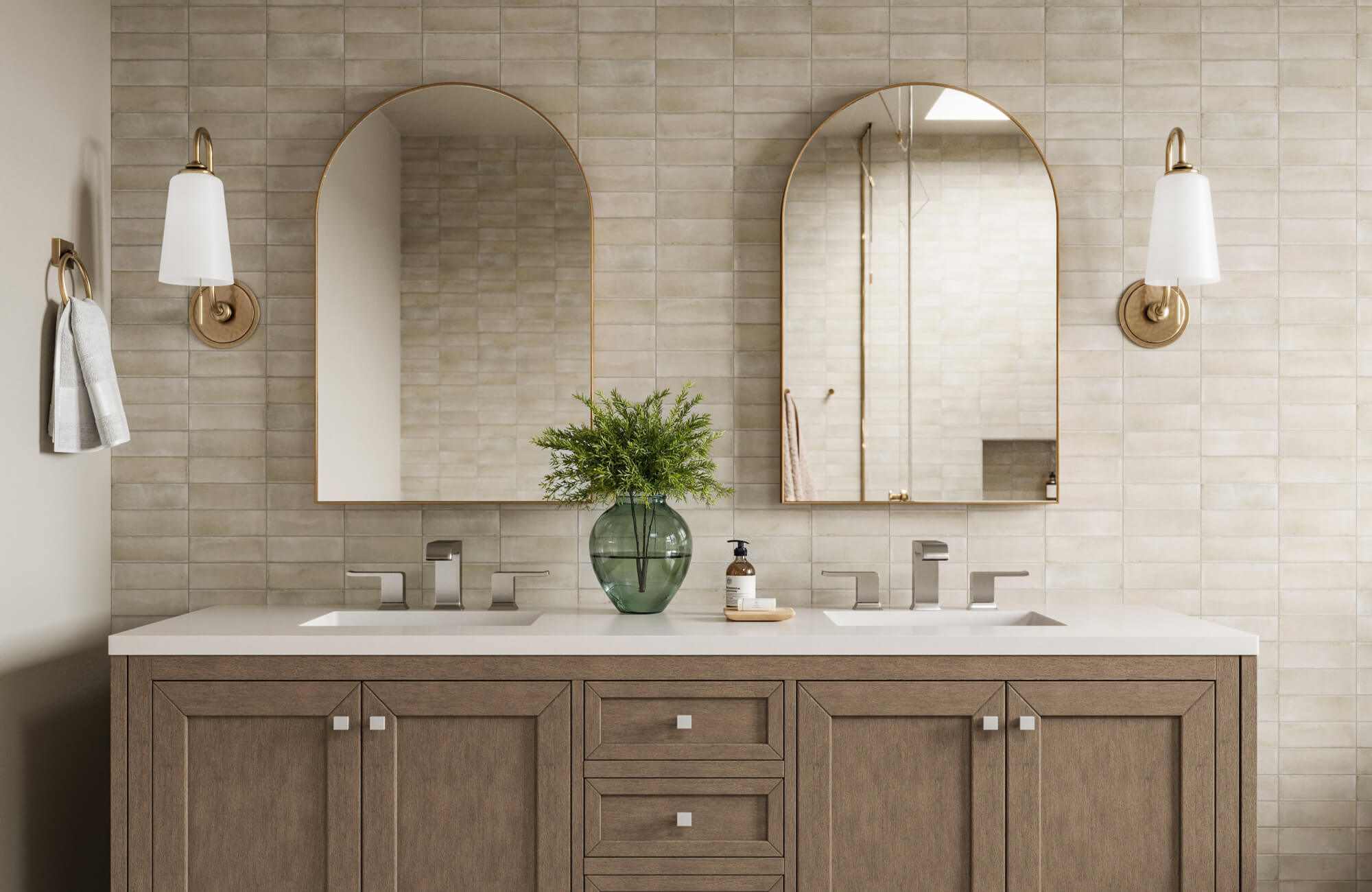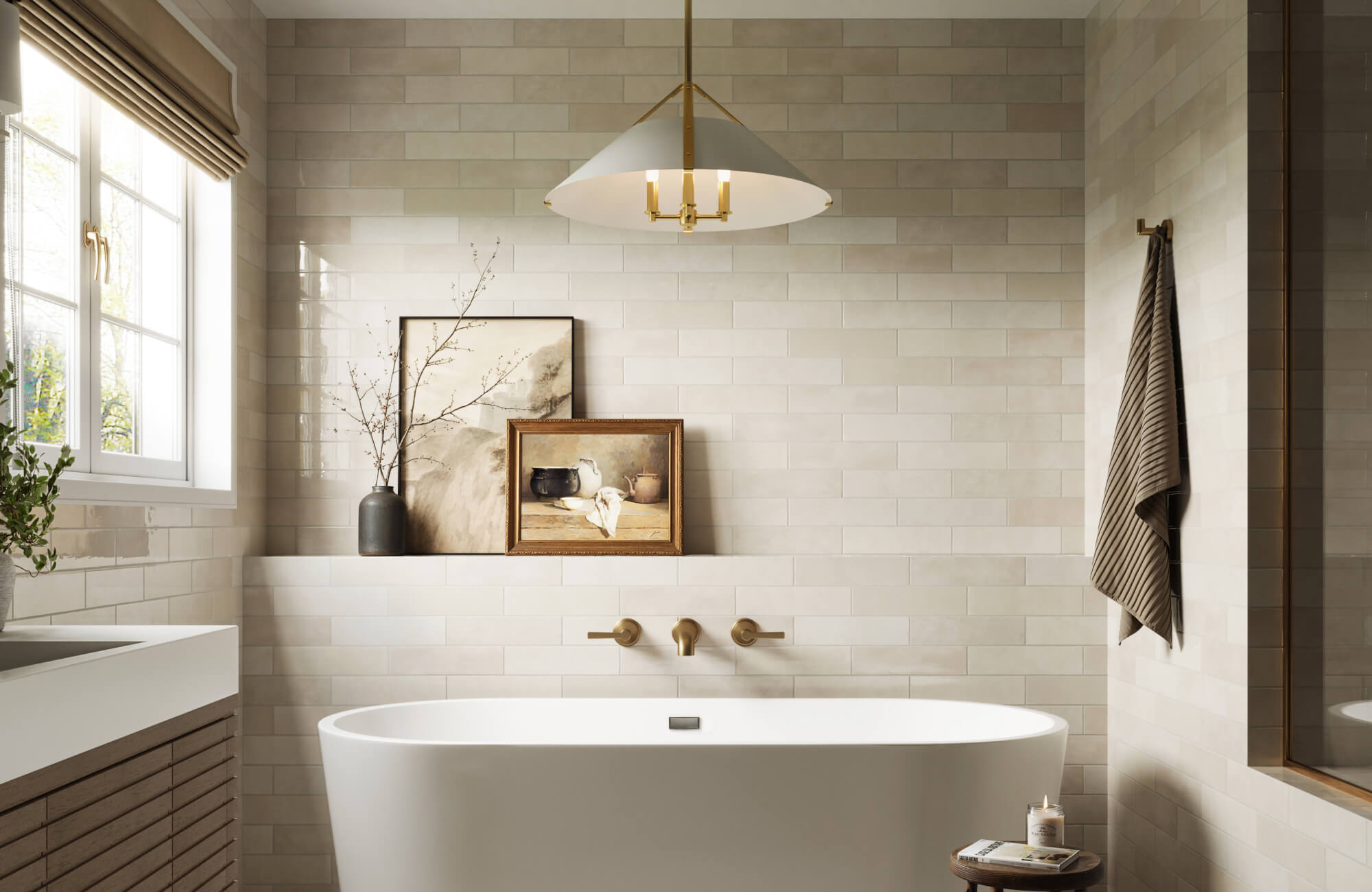Mirrors do more than reflect our image; they also quietly shape how a room feels. The right mirror can brighten a dark corner, open up a narrow hallway, or add softness to a room full of sharp angles. And often, it’s the shape that makes all the difference in how seamlessly a mirror fits into your space.
In this article, we’ll look at how different mirror shapes influence balance, flow, and visual impact. Whether you’re decorating a bedroom, bathroom, or entryway, you’ll find helpful ideas to choose a shape that works with your layout and adds something meaningful to the room.

The Role of the Mirror in Your Space
Mirrors aren’t just decorative. They serve a purpose that often goes beyond reflection. Before choosing a shape, it helps to think about what you actually need the mirror to do. For example, is it meant to support a daily routine, create a focal point, or bring in more light?
Each of those goals points toward a different shape or style. A full-length mirror offers a functional, head-to-toe view, while something with curved edges, like our Fitz Mirror in Antiqued Iron above, can soften lines and help light feel more diffused. Some mirrors also act as design features, adding a sense of balance or contrast depending on the surrounding elements.
Taking a moment to define the mirror’s role makes it easier to narrow down your options. Instead of choosing based on looks alone, you’ll be able to find a shape that feels intentional. It becomes less about trend and more about function and visual support.

Popular Mirror Shapes and Their Design Impact
Mirror shape does more than define form; it influences balance, mood, and how your space flows. Some shapes blend seamlessly into a room, while others make bold statements or add architectural character. Below, we explore what each popular mirror shape brings to your design.
Round Mirrors
Round mirrors naturally soften a space with their curved edges, making them ideal for breaking up boxy rooms or adding balance to angular layouts. They’re especially useful in small spaces, where their shape feels open and less rigid. For instance, placing one above a console or pedestal sink creates a friendly focal point without dominating the wall. They also work well in multiples, forming a stylish grid or scattered layout.
This shape is versatile and timeless, fitting into modern, transitional, or even eclectic interiors. It reflects light without feeling harsh and works beautifully in relaxed settings like bedrooms or entryways. Also, its symmetrical form adds cohesion to layered décor without looking forced. Just keep in mind that round mirrors offer a different kind of presence than their oval or arched counterparts—they feel modern and balanced rather than elongated or ornate.
Oval Mirrors
Oval mirrors lend a softer, more traditional feel while making the most of vertical space. Their shape guides the eye upward, which can subtly elongate a wall and create a sense of height. This makes them a smart choice for narrow bathrooms or above vanities where height is limited but impact is needed. They also pair well with double sinks, providing symmetry while avoiding the bulk of rectangular frames.
In terms of style, ovals tend to lean classic, bringing a quiet elegance to bedrooms, powder rooms, or hallways. Their graceful curves offer structure without the formal edge of sharp corners. They’re also great for softening hard architectural lines, especially when paired with gentle lighting. Unlike round mirrors, ovals stretch vertically, making them feel both functional and refined.
Square Mirrors
Square mirrors bring structure and symmetry to a space, especially when used in pairs or groups. Their balanced proportions work well in modern interiors that prioritize clean lines and visual stability. For instance, a set of square mirrors above a double vanity or arranged in a gallery wall can anchor a design with minimal effort. They’re also great for rooms that need a bit of geometric reinforcement.
Because of their equal height and width, square mirrors can create a sense of containment and focus. They often suit minimalist or mid-century modern styles where simplicity is key. Also, their uniform shape makes them easy to mix and match across different rooms. Just be careful not to confuse them with rectangles—squares work best where space allows for equal framing and visual weight.
Rectangular Mirrors
Rectangular mirrors are perhaps the most flexible, offering either vertical or horizontal orientation to fit a variety of needs. Hanging horizontally, they can stretch a room visually, making them perfect for above couches, buffets, or vanities. When hung vertically, they offer a full-body view or draw attention to height, which is useful in bedrooms or dressing areas. Their form easily adapts to both small and large walls.
Because of this versatility, rectangles are a go-to shape in both modern and traditional interiors. They suit functional roles just as well as decorative ones, especially when framed to match surrounding materials. Also, they blend effortlessly into both symmetrical and asymmetrical layouts. While similar to square mirrors in their simplicity, their extended form makes them more dynamic and space-adaptable.
Arched or Curved Top Mirrors
Arched mirrors introduce a touch of architectural charm, often echoing the curves of doorways, windows, or vintage furniture. Their soft, upward arc adds height and elegance without being too formal. For example, placing one in an entryway or over a console table can create a moment of visual lift and softness. They also pair beautifully with layered lighting or textured backdrops.
Unlike oval mirrors, arched tops have a distinct structure that adds depth and historical flair. They’re great for creating a sense of old-world sophistication or adding contrast in modern spaces. Also, the curve can visually break up a rigid space, offering a gentle focal point without overwhelming the design. This makes them especially effective in rooms that need architectural presence but not sharp lines.
Abstract or Irregular Shapes
Abstract mirrors, such as our Rory Mirror in Antique Brass Iron seen above, break the mold with freeform shapes that often feel like artwork in their own right. These styles work best in creative spaces where you want to add personality, movement, or surprise. For instance, an irregular mirror above a sideboard or fireplace can serve as both décor and a visual conversation starter. They’re perfect for rooms that lean playful, artistic, or boundary-pushing.
These mirrors are especially effective when paired with simple furniture or muted palettes, they add energy without needing bright colors or busy patterns. Also, they offer a chance to reflect your personal style in a way no symmetrical mirror can. Just be mindful of balance; too many irregular forms can compete with the rest of your décor. The key is to let one bold piece anchor the room without stealing every spotlight.

Choosing Between Framed and Frameless Mirror Styles
A mirror’s shape plays a big role in setting the tone of a room, but its frame (or lack of one) can completely shift that impression. Frameless mirrors often feel sleek and modern, especially when paired with clean-lined shapes like rectangles or circles. For instance, a frameless round mirror over a pedestal sink looks light and airy, reinforcing a minimalist or contemporary mood. Without a border, the mirror’s shape stands alone, allowing it to blend more naturally into the wall.
Framed mirrors, as seen above with our Everdale Small Mirror in Gunmetal, on the other hand, tend to introduce more presence and definition. Even a simple square mirror can feel classic or formal if surrounded by an ornate or structured frame. Frames can also visually anchor the mirror, making it a bolder element within the design. The thicker or more detailed the frame, the more it influences the mirror’s perceived weight in the room, which is great for spaces that need a stronger focal point.
It’s helpful to think of the frame as a visual “voice” that supports the mirror’s shape. While frameless mirrors let the shape do the talking, framed ones can guide how that shape is interpreted; subtle and modern, or warm and traditional. When choosing between the two, consider the room’s existing textures, color palette, and how much contrast or softness you want the mirror to contribute.

Choosing the Right Shape for Each Room
Every room serves a different purpose, and the shape of the mirror you choose should reflect that. Some spaces benefit from mirrors that stretch the eye horizontally, while others need something vertical or artistic to tie the layout together. Below, we walk through the best shape choices based on function, layout, and overall design intent.
Living Room
In the living room, mirrors are often used to open up the space or reflect natural light from nearby windows. Round and arched mirrors work especially well here; they soften corners and help distribute light more evenly. A horizontal rectangle can also stretch the room visually, especially above a sofa or sideboard. Just make sure the mirror shape complements the existing furniture proportions without overwhelming the wall.
This space is also where you can get a little more playful with placement. For instance, pairing a large round mirror with layered art or using a curved-top mirror above a fireplace can create an inviting focal point, as seen with the Esmeralda Wide Mirror in Iron Matte Black. These shapes invite movement and warmth into an area that’s often used for gathering and relaxing. What matters most is that the mirror contributes to a balanced, comfortable flow in the room.
Bathroom
In bathrooms, function and symmetry often lead the way, especially around vanities. Rectangular mirrors are the go-to here because they offer clean lines and consistent coverage for grooming tasks. They can be hung horizontally or vertically, depending on your sink layout, and are easy to pair with sconces for proper lighting. For a softer look, oval mirrors also work well above single vanities, adding a touch of elegance while still staying practical.
Also, the shape you choose should mirror the layout of your fixtures—pun intended. A long double vanity might call for two round mirrors or one large rectangle, while a powder room can handle something more sculptural, like an arch. The key is making sure the mirror shape supports daily routines while still complementing the design. You want both balance and clarity every time you step up to the sink.
Bedroom
Bedrooms benefit from mirrors that are both functional and mood-setting. A tall rectangular or arched mirror is ideal for getting dressed, especially when placed near a closet or leaning against a wall. These shapes help reflect more of the body, making them practical for outfit checks while adding visual height to the room. Full-length mirrors also make a space feel larger and more open without taking over the design.
In terms of placement, mirrors in the bedroom often do double duty. For instance, a round or square mirror above a dresser can provide visual balance and serve as a styling spot. Choose shapes that add softness or contrast depending on the room’s color palette and furniture lines. Since this space is about rest and personal comfort, your mirror should quietly support the atmosphere without drawing too much attention.
Entryway
The entryway is all about first impressions, and mirror shape plays a big part in that. Round and arched mirrors create a welcoming tone and help soften the straight lines of doors or storage units. They also reflect natural light from nearby windows, making even small foyers feel more open and inviting. A compact horizontal rectangle above a console table is another great way to visually expand the space.
Because entryways are often narrow or busy areas, the mirror needs to balance form and function. A tall shape can help elongate the wall without cluttering the area, while a small, grouped set of squares or circles adds charm without overwhelming the space. Think of this mirror as both a practical check-in point and a subtle design anchor. It should guide the eye and set the mood as soon as someone walks through the door.

What to Consider When Mixing Multiple Mirror Shapes
Using more than one mirror shape in a single room can bring energy, texture, and character to your design, but only if done intentionally. The key is to create a sense of visual cohesion, even when the shapes vary. For instance, you might pair a large rectangular mirror with smaller round ones nearby to soften the composition without losing structure. The goal isn’t perfect symmetry, but rather a layout that feels anchored and purposeful.
Pay close attention to the scale and spacing of each mirror. Mirrors that are too close in size but differ in shape can feel mismatched, while combining dramatically different sizes allows each piece to stand out. Also, consider using repeated shapes in subtle ways, like echoing a round mirror’s curve in your lighting or furniture, to tie everything together. Even abstract mirrors can work alongside more traditional shapes, as long as there's a clear rhythm in how they’re placed.
It's also worth thinking about where the eye is drawn. A unique mirror shape should act as a focal point, not compete with several others of equal weight. Try anchoring the room with one dominant mirror and supporting it with smaller, secondary shapes that complement rather than distract. When in doubt, step back and look at the wall as a whole. If the shapes feel like they’re working together rather than pulling apart, you’ve struck the right balance.
Shaping Your Space with Confidence
Choosing the right mirror shape isn’t just about following trends, it’s about supporting your room’s purpose, layout, and personality. Whether you lean toward soft curves, crisp edges, or a playful combination of both, each shape offers a different visual effect and functional role. From softening harsh corners to drawing the eye upward or stretching the space sideways, mirrors have a quiet but powerful way of shaping how a room feels.
If you're unsure which mirror shape will best complement your space, we're here to help. Our personalized design consultation offers tailored advice based on your room’s style, lighting, and layout, so you can choose a mirror that looks good and works beautifully, too!







